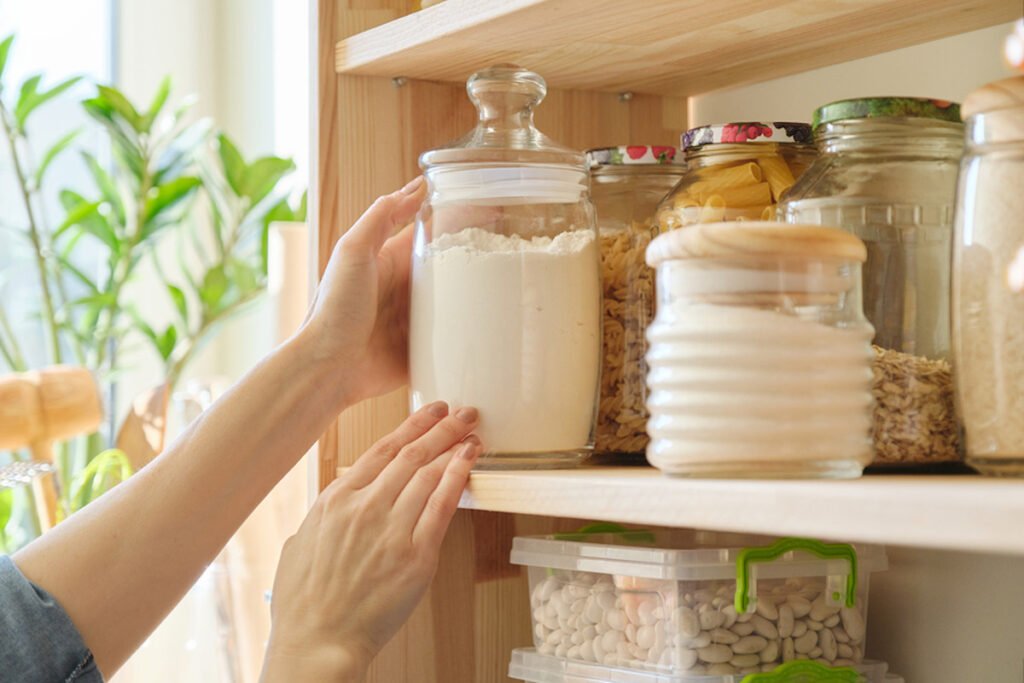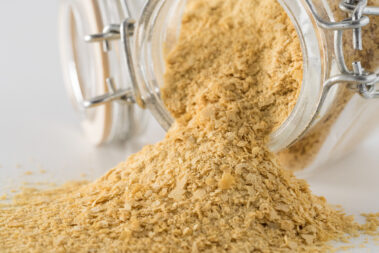One pantry staple you are likely to find in just about every kitchen in the world is flour. Depending on how often you bake, this bag of flour may be only a few months old, or, more likely, a few years.
Considering how long most bags of flour sit between uses, you might be surprised to learn that flour has a relatively short shelf life. And this is true no matter what type of flour you are using.
In this article, we will take a look at the most common types of flour, how long each is typically good for, and how to store them so they actually last until the next time you need them.
Table of Contents
The Shelf Life of Different Types of Flour
Whether you are a die-hard whole-wheat baker, a keto-aficionado, or prefer to go the gluten-free route, the flour you are using can go bad. But how quickly that happens does depend on your preferred type.
White All-Purpose Flour
The most common type of flour is white flour. This kind of flour is made by processing wheat to remove the germ and bran from the grain. Surprisingly, this extra processing actually helps this type of flour last longer than any other type you’ll find.
White flour will generally last about a year in the pantry if unopened. Once opened, oxygen and moisture increase the rate of spoilage, so it is best to transfer opened bags to airtight containers.
You can also put your white flour in the freezer to extend that shelf life to about two years. Just make sure to allow portions to thaw before using them in your recipes.
Whole Wheat Flour
Unlike white flour, whole wheat flour still contains the germ and bran of the grain. While these extra parts add a ton of nutrients to the flour, they also add oils that are more prone to spoilage. That’s why whole wheat flour will only last about three to six months on the shelf.
Colder temperatures can help slow the degradation of oils, so it is especially helpful to store whole grain flour in the freezer in an airtight container. This will extend the shelf life to about a year.
Nut and Seed Flour
Nut and seed flours, or meals, are even higher in fat than whole wheat flours. These tend to have similar or shorter shelf lives.
It is wise to store any of these types of flours, including almond meal, coconut flour, and ground flaxseeds, in the freezer to help extend their shelf life to around a year. Even if you plan to use these flours up quickly, storing them in an airtight container in the fridge can help safeguard many of the vital nutrients and healthy omega fatty acids that these flours are celebrated for.
Gluten-Free Flour
How long other types of gluten-free flours will last in the pantry depends on their makeup.
White rice flours have a similar shelf life to white wheat flour due to the additional processing and lack of fatty bran and germ. Brown rice flour, on the other hand, will spoil much more quickly and should be kept in the freezer to extend the shelf life from about three months to closer to a year.
Many gluten-free baking flours contain a mix of different flour types including flours from chickpeas, nuts, seeds, gluten-free oats, and rice.
While bean flours tend to last a little longer than whole grain flours such as oat, they still only have a shelf life of about six months so it is best to store these types of flours in the freezer as well.
How to Tell If Flour Has Gone Bad
If you have a bag of flour on your shelf that has gone past its expiration date, that doesn’t necessarily mean it has gone bad. This is especially true of those low-fat flour types, but even whole grain flours can last if stored in a dry, cool, dark corner of the pantry.
In this situation, you can usually tell if the flour has gone bad based on the smell.
White flours, typically, have little to no discernable odor when they are fresh. Nut and whole-grain flours tend to have more of a nutty scent.
Once the flour has gone bad, that largely neutral odor tends to turn a bit sour or stale.
If you are on the fence about whether your flour has started to go bad or not, know that there is relatively low risk associated with consuming rancid flour. It may, however, affect the taste of your recipe or baked goods and it is much less nutritious than fresh flour.
Much more concerning than if the flour has gone stale or rancid, is if it has started to mold.
Ingesting moldy flour can be very dangerous and often leads to digestive upset. Some molds even produce mycotoxins, chemicals that can cause serious illnesses and liver damage. If you find any mold in your flour, even if it is just as small amount at the bottom of the bag, throw the entire thing away.
To avoid mold growth in your flour, always store bags on the upper shelves of your cupboard or pantry away from wet ingredients and moisture.
Once you have opened a bag, it is best to transfer the flour to an airtight, moisture-proof container. If you are using storage ware or other reusable containers, double-check that the container is completely dry before putting the flour in it. Even the tiniest bit of moisture can ruin an entire bag of flour.
No matter what type of flour you prefer to use for your baking exploits, proper storage is key to avoiding unnecessary waste and unplanned trips to the supermarket.
Feature photo: ©VH-studio/Bigstock
- How to Pick the Perfect Watermelon For a Sweet Summer Treat - April 10, 2024
- Future Kind’s Foundations: A Multivitamin Made for Vegans - December 5, 2023
- Does Nutritional Yeast Go Bad? - November 28, 2023








